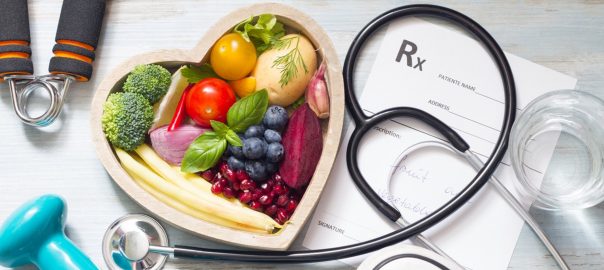
Exploring Cholesterol Level Impacts on Health
Cholesterol: What You Need To Know
Understand the different types of cholesterol and their effects on heart health. Plus, learn how to reduce your risk for heart disease by managing cholesterol.
Disclaimer: The information in this article is not medical advice. A low carb diet may not be suitable for you. Consult your health care provider before making any changes to your lifestyle or use this information at your own risk.
Many people worry about their cholesterol levels since it has been drilled into our minds that cholesterol is bad. While high levels of certain forms of cholesterol in the blood does increase your risk for heart disease, there is more to know about this subject before writing off any foods containing cholesterol.
In this article, we explain what cholesterol is, the different types of cholesterol and explain the difference between good and bad cholesterol, as well as how you can reduce “bad” cholesterol while increasing “good” cholesterol in your blood. We will also include general tips for improving your heart health.
What is Cholesterol?
Cholesterol is a type of fat molecule that attaches to proteins called lipoproteins and travels through the blood. Cholesterol can come from one of two sources; the liver naturally produces all the cholesterol your body needs to function, and the rest of the cholesterol found in one’s blood comes from dietary sources. The only way to get cholesterol from the diet is by eating animal products (including animal by-products such as eggs and dairy) and consuming the cholesterol that was produced by that animal’s liver and circulated through its blood.
One of the main functions of cholesterol is assisting in the synthesis of cell membranes. Cholesterol helps maintain the fluidity and structure of the outer layer of cells, which can help create healthy cells. In addition, cholesterol is involved in the synthesis of hormones, Vitamin D, and other important substances in the body.
Types of Cholesterol
To assess cholesterol levels, medical professionals will look at a few different metrics. These include:
- Total Cholesterol – this is the total amount of cholesterol in your blood. It may include low density lipoprotein (LDL) cholesterol, high density lipoprotein (HDL) cholesterol and very low-density lipoprotein (VLDL) cholesterol.
- LDL Cholesterol – low density lipoprotein (LDL) makes up most of the cholesterol in your body. High levels of LDL cholesterol can raise your risk of heart disease, which is why it is often called “bad” cholesterol.
- HDL Cholesterol – high density lipoprotein (HDL) absorbs cholesterol in the blood and carries it back to the liver, where it is then flushed from the body. Having high levels of HDL cholesterol can lower your risk for heart disease, which is why it is often referred to as “good” cholesterol.
- Triglycerides – this is another type of fat found in the blood that is formed when calories are not converted into energy right away. These are stored in fat cells and may be released later for energy between meals. Some triglycerides are necessary for good health, but having too much can be problematic.
If you are concerned about your levels of any of these, you can request a blood test called a lipoprotein panel from your health practitioner to measure your cholesterol levels. These tests will often measure your triglyceride levels, as well. Note that you may need to fast before your test to get accurate results. It is a good idea to get your cholesterol levels checked about every 5 years.
Cholesterol and Risk of Heart Disease
Having too much LDL cholesterol circulating in the blood increases your risk of heart disease. This is because LDL cholesterol tends to build up on the walls of your blood vessels, restricting blood flow to and from your heart and other organs. Some consequences of restricted blood flow include angina (chest pain), heart attack and stroke.
In addition, not having enough HDL cholesterol can increase your risk for heart disease. Your doctor may recommend lifestyle changes to either reduce your LDL levels or increase your HDL levels, or both.
Factors That Affect Your Cholesterol Levels
Many things can affect your cholesterol levels, some of which are out of our control. These include your age and gender, as well as any genetic predispositions. As we get older, our cholesterol levels tend to rise. In general, men tend to be at a greater risk for high cholesterol levels, although women should pay special attention after menopause as this is the most common time for LDL cholesterol levels to rise. Genetics also determine how much cholesterol the body naturally produces. Ask your relatives whether they have ever had their cholesterol levels tested and note that high cholesterol levels can run in families.
Luckily, there are many things you can do to improve your cholesterol levels that are completely in your control. These include:
- Your diet plays a key role in your cholesterol levels. As we previously mentioned, the only way to increase your cholesterol levels aside from the body’s natural production is through the consumption of animal products. Foods high in saturated and trans fats can also increase your risk for heart disease. So, limiting these can help with improving your overall cardiovascular health.
- Being overweight or obese contributes to your risk for developing heart disease. Losing weight can lower LDL cholesterol and triglyceride levels while also raising HDL cholesterol levels.
- Regular exercise can help lower LDL cholesterol levels and rise HDL cholesterol levels. It can also help you lose weight, which can improve your overall risk levels for heart disease. Aim to be physically active for at least 20-30 minutes every day.
- Cigarette smoke lowers HDL cholesterol levels. As we mentioned previously, HDL cholesterol helps remove cholesterol from the blood and flush it out of the body, preventing the buildup of plaque in the arteries.
How to Reduce LDL Cholesterol
Several lifestyle changes are necessary if you have been diagnosed with high cholesterol levels or are at risk. These essentially involve getting into a good diet and exercise routine, but these can be big changes for some people and the task can feel daunting. Our advice is to set goals and gradually work towards achieving them one at a time.
Here are some examples of simple things you can do to change your lifestyle and specifically reduce LDL cholesterol levels:
- Add cardio exercises to your daily regimen.
Although the frequency of your workouts matters more than the type of workout, cardio (walking, running, jumping rope, stair climbing, bike riding and others) may be the best type of exercise to improve cardiovascular health. Regardless, try to add physical activity into your daily routine, for at least 20 minutes a day. You can even get creative with the ways in which you exercise, such as taking the stairs more often, standing instead of sitting at work (if possible), playing physical sports with your children, or taking a dance class.
- Swap out your cooking oils.
Many people use margarine or refined vegetable oils (such as canola oil) to cook with every day. Over time, the types of fats in these oils can do a lot of damage to our bodies, including increasing your risk for heart disease and increasing inflammation. The best oils to use when cooking should have a high smoke point and be rich in unsaturated fats. Some good examples of these include unrefined coconut oil (highest smoke point), extra virgin olive oil and ghee. There is some controversy around butter; many people claim that the saturated fats in butter contribute to heart disease. However, if you are choosing a high quality, grass-fed butter, this can provide just as many nutrients as some of the other oils mentioned – and add a lot of flavour!
- Opt for more vegetarian and vegan meals.
Since meat and animal by-products contain dietary cholesterol, unlike plant-based foods, it is a good idea to limit your intake of animal foods if you are at high risk for heart disease. This could even be as simple as choosing one day a week to eat vegan or vegetarian meals. Some great plant-based sources of protein include soy (including tofu and tempeh), seitan (made from wheat gluten), legumes, nuts and seeds. If they are part of your diet, things like oatmeal, bulgur, brown rice and quinoa also contain moderate amounts of protein. Alternatively, you could opt for vegan protein bars when you’re looking to substitute deli-meat sandwiches or animal-based bars and snacks. Here is a link to a number of vegan and vegetarian recipes that can help lower high cholesterol levels!
- Choose grass-fed meat.
If you choose not to limit meat in your diet, try to make the conscious choice to buy high quality meat. Grass-fed beef has lower levels of dietary cholesterol, as well as less unhealthy fats, more vitamins, more heart-healthy omega-3 fatty acids, and more antioxidants. Although it comes with a higher price tag, the nutritional difference is tremendous. And, if it means you can still eat meat while watching your cholesterol levels, it might be worth it! As a quick start, we recommend Nick’s Sticks 100% Grass-Fed Beef Jerky Sticks, a nutritious and tasty snack that will keep you satiated!
When shopping for poultry or eggs, look for labels indicating that the chickens were raised on family farms, free-range, or pasture raised. The best quality fish is also wild caught, rather than farmed.
How to Increase HDL Cholesterol
In addition to lowering your levels of LDL cholesterol, it is also important to do things that can help raise your levels of HDL cholesterol.
Here are a few things you can do to raise levels of HDL cholesterol in your blood:
- Use coconut oil.
Although some people think that coconut oil is “unhealthy” because it contains high levels of saturated fats, the opposite is actually true. The saturated fats in coconut oil have not been proven to increase risk for heart disease, and in fact, have shown many positive health benefits. For example, coconut oil has shown to reduce appetite levels, protect brain health and improve metabolism (due to its content of MCTs, which are rapidly converted into energy). In addition, some studies have shown that coconut oil can raise HDL cholesterol levels more than other types of fats and can improve the overall ratio of LDL to HDL cholesterol.
- Eat fatty fish often.
Fatty fish contain a lot of heart healthy omega-3 fatty acids. These improve heart health by lowering inflammation levels and improving the function of the cells that line the arteries to prevent plaque buildup. Some studies have also shown that eating fatty fish often or taking a daily fish oil supplement can raise low levels of HDL cholesterol levels. Some examples of fatty fish include salmon (preferably wild caught), mackerel (also called “saba” for sushi lovers!), sardines, and anchovies. Aim to eat 2-3 servings of fatty fish a week or find a daily fish oil supplement that works for you.
- Choose purple coloured produce.
Purple coloured fruits and vegetables contain a unique and potent antioxidant called anthocyanins, that can help fight inflammation and potentially raise HDL cholesterol levels. Inflammation can contribute to a higher risk of heart disease, as well as your risk for many other chronic diseases. Antioxidant-rich foods help fight free radicals, which are inflammation-causing toxins in the body. The buildup of free radicals can occur from natural metabolic processes, but also from exposure to environmental toxins such as pollution, pesticides used in inorganic farming practices, fast foods, refined and processed packaged foods, tobacco and alcohol.
Some examples of fruits and vegetables that contain anthocyanins include:
- Blueberries
- Blackberries
- Acai berries
- Cherries
- Cranberries
- Black plums
- Eggplant (including the peel)
- Purple cabbage
- Purple sweet potatoes (also known as Okinawan or Hawaiian sweet potatoes)
- Red radishes
- Purple cauliflower
- Follow a low carb or ketogenic diet.
Low carb diets and ketogenic diets have many proven benefits for people who want to lose weight and manage conditions such as diabetes, that can increase your risk for heart disease. Studies have also shown that low carb high fat diets can increase HDL cholesterol levels. One study observed the levels of HDL cholesterol in two groups of people with type 2 diabetes who were given a specific diet to lose weight. One group was given a low carb diet and the other was given a high carb diet. While both groups successfully lost weight, the group that followed the low carb diet experienced an increase in HDL cholesterol levels, while the other group actually experienced a decrease.
Conclusion
We hope that this article helps you feel empowered to start or better manage your cholesterol levels with some basic knowledge. If you would like, please let us know how we did by leaving us a Google Review. You can also share your thoughts by joining our communities on Facebook or Instagram.
If you want to stay in touch with The Low Carb Grocery, you can subscribe to our weekly newsletter where you’ll find the latest low carb and keto news, along with the best selection of low carb and sugar free products on sale weekly!






